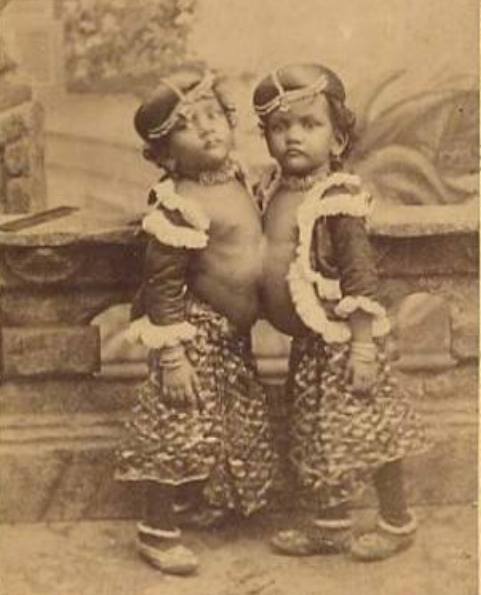The Other Famous ‘Orissa Twins’

There are many who are praying for the safe recovery of the conjoined twins Jaga and Kalia. If the operation will be a success, it will be medical history. The doctors who performed the operation at AIIMS, New Delhi, are in a Catch-22 situation; left on their own, the twins would not have survived for long, and the operation too was a very risky affair.
The case of Jaga and Kalia and the separation operation bears resemblance to another case from Odisha which was took place in 1902 in France. A pair of conjoined twins from Odisha, named Radica and Doodica, was operated upon but both of them died soon after. I have located the grave of one of the sisters in a Cemetery at Paris. I am just waiting for confirmation from the authorities.
THE ODISHA TWINS
The earliest confirmed account of Odias in England and America is of the Siamese twins Radhika and Doodica, popularly known as the “Orissa Twins”. There are various newspaper accounts of these twins having toured the Americas, Europe and England. The sisters had a decade long stint, exhibiting themselves as freaks in different exhibitions.

The twins were born in 1888 to Khestra Nayak of Haopara village in Dhenkanal district. For the poor parents, the deformed kids were a liability. Moreover, the birth of these conjoined twins was seen by the superstitious villagers as a symbol of divine wrath. The community ostracised the family and in sheer desperation the father tried to forcefully separate them. However some local officials prevented him and the local Mahima sadhus took them under their protection. It was they who named the girls Radhika and Dudhika.

Word of the freaks got around and was reported in the English press in 1892. London showman Captain Colman sent his agent to Odisha, who convinced the monks to hand over the twins for their better treatment. There is even proof that an Odia lady, probably an aunt, accompanied the twins. They sailed for the Americas to take part in the Chicago Fair of 1893, after stopping for a week in London. The British Medical Journal carried a report on the twins in its June 1893 issue, citing “the two little girls, nearly four years old, are apparently perfect in every respect, except that from the ensiform cartilage to the umbilicus they are united together”.

They were a big draw at the Chicago Fair and this drew the attention of P T Barnum of the famous Barnum and Bailey Circus. They twins were soon a part of the “The Greatest Show on Earth.” The sisters were shown on colourful posters and postcards as the “Orissa Twins” or “Hindu twins”, and were big crowd-pullers wherever the shows went. There were stories about the twins in magazines and newspapers, which portrayed them as exceedingly pretty, charming and vivacious young ladies. Captain Colman treated the girls as an adoptive father and the girls were happy with each other. They learnt English and travelled all over Europe and the USA.

In 1902, while in France, Doodica developed tuberculosis. With the hope of saving Radhika, Dr Eugene Louis Doyen, the famous surgeon of France and a pioneer scientific film maker, did the separation surgery on February 9, 1902. He filmed the twins’ surgery and showed is as “La Separation de Doodica-Radica”. Sections of Doyen’s film were part of the 1995 BBC documentary series “The Last Machine”.

The operation was a failure as Doodica died just seven hours after the surgery. Radhika too did not live long; she passed away after a few months. Dr. Doyen’s operation has stirred up a controversy among the medical fraternity of the time. Both the sisters were given secret burials in Paris. Nothing was known about them until Thierry Lefebvre, wrote about them in his 2004 book titled “Flesh and Celluloid: The surgical cinema of Dr Doyen”. Few in Odisha know of them, there are no archival accounts of the twins who had toured the world a good four years before Madhu Babu stepped ashore.

I have gathered many details of the posters which were used to draw the crowds. I could also manage to get newspapers of the time with stories of the twins.
The film of the operation can be seen below:

Comments are closed.